

Expert Educatie Duurzame Ontwikkeling. Noun Project: Free Icons & Stock Photos for Everything. Cardboard Catenary. The cardboard catenary arch is a fun project for any classroom.

It is appropriate for students of all levels and provides an enjoyable construction challenge that is a vehicle for the exploration of mathematical ideas. Students will enjoy having this beautiful sculptural creation in their classroom which will engage them continuously as they repeatedly rebuild it.
With middle school and older students, we recommend first doing the paper catenary arch in order to give them a detailed understanding of the structure and assembly process. After that, very little instruction is needed for the cardboard version. With younger students, we suggest that the teacher prepares ahead of time by doing the paper catenary workshop themselves, both to internalize the details and to have a finished paper version for students to play with.
The Eli Whitney Museum and Workshop. Boite à outils – faire et apprendre ensemble. Search. Geek Mom Projects – Techie ideas to do with (or without) kids! Edge-Lit Pendant – Geek Mom Projects. This is yet another teeny-tiny edge-lit project and it’s the easiest build of any I’ve posted so far.

Like the others, it uses a tiny LED and copper tape to make a circuit you can turn on and off by inserting and removing the battery. I designed this project as a drop-in DIY activity for a display at Hawthorne High School Maker Faire, and it was a big hit with visitors of all ages. Kids aged about twelve and older were generally able to complete this project without help, while most younger children needed assistance from an adult.
I used florescent green acrylic and a plain white LED for the pictures shown here, but this project also looks great with clear acrylic and color-cycling LEDs. Build Overview: The stop-motion video below shows how simple the assembly of this project is: Components: Tools: ScrewdriverScissorsLaser cutter (or an online laser cutting service like Ponoko) Laser Cut the Wood and Acrylic: The files for laser cutting the wood sheet and acrylic are below. Test the Circuit: EMOSILLA, a digital fabrication project by Fab Lat Kids. Description The Emosilla Workshop has the goal to make kids aware of their emotions and help them capture them on a chair that they fabricate, customize and take home.
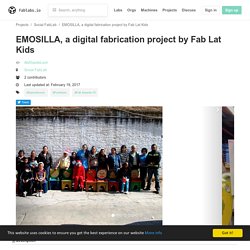
It also intends to promote cultural exchange within Latin America, where it was conceived, and to the rest of the world. Basic concepts of digital fabrication are introduced to the kids. They participate in the design of their own chair and fabricate it using the Milling machine and Laser cutter. In the next step they assemble it with a press-fit construction process and paint it. The workshop also researches about education and digital fabrication for Latin American kids.
How to Build a Robot - the BeetleBot V2 ( Revisited ): 23 Steps. AdWords We use AdWords to deploy digital advertising on sites supported by AdWords.
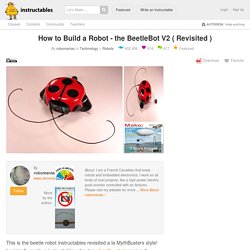
Ads are based on both AdWords data and behavioral data that we collect while you’re on our sites. The data we collect may include pages you’ve visited, trials you’ve initiated, videos you’ve played, purchases you’ve made, and your IP address or device ID. This information may be combined with data that AdWords has collected from you. We use the data that we provide to AdWords to better customize your digital advertising experience and present you with more relevant ads.
Maker Share. 25 Makerspace (STEM / STEAM) Projects For Kids. Makerspace or STEM projects for kids don’t have to be complicated or expensive. In fact, some of the best projects use recycled or repurposed items like cardboard or soda bottles which means nothing to buy. Below, we’ve compiled some of our favorite projects that are great for makerspaces. Project Paths - Maker Camp. More than just a robot. How to make a phenakistoscope, an animation device, out of paper. A phenakistoscope is a precursor to a zoetrope.
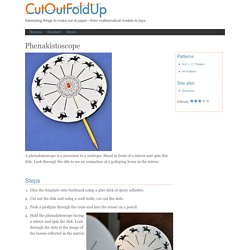
Stand in front of a mirror and spin this disk. Look through the slits to see an animation of a galloping horse in the mirror. Steps Glue the template onto boxboard using a glue stick or spray adhesive. Cut out the disk and using a craft knife, cut out the slots. Hold the phenakistoscope facing a mirror and spin the disk. Notes Joseph Plateau and Simon von Stampfer invented the phenakistoscope independently in 1832 a couple of years before William George Horner developed the zoetrope. Home - ABCmaken.nl. Making an Impressive Working Robotic Arm from Cardboard.
How to Create a Phenakistoscope - Howcast. LEDs for Beginners: 9 Steps.
Stempels. How to Heat Press a T‐Shirt: 14 Steps (with Pictures) Laser Cut This Slot-Together Raceway. Math Monday: Quick Giant Polyhedra. VU Meter - LED Noise-o-Meter for Classrooms: 8 Steps. Project. Vacum Vorming. Simple Machines. STEM-Works - Robotics Activities. Beam Camp: A summer of Making, Building and Collaborating for kids and teens — Project 2014.2.
Electricity for kids - and everyone else: A simple introduction! Advertisement by Chris Woodford.
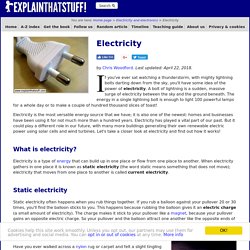
Last updated: April 22, 2018. If you've ever sat watching a thunderstorm, with mighty lightning bolts darting down from the sky, you'll have some idea of the power of electricity. A bolt of lightning is a sudden, massive surge of electricity between the sky and the ground beneath. The energy in a single lightning bolt is enough to light 100 powerful lamps for a whole day or to make a couple of hundred thousand slices of toast! Electricity is the most versatile energy source that we have; it is also one of the newest: homes and businesses have been using it for not much more than a hundred years.
What is electricity? Electricity is a type of energy that can build up in one place or flow from one place to another. Static electricity Static electricity often happens when you rub things together. Walking man automata - wolfCat workshop. One of the most popular pieces from the small machines series was the walking man from November 6.
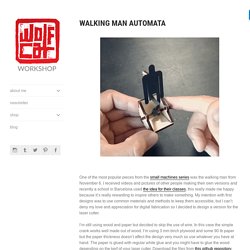
I received videos and pictures of other people making their own versions and recently a school in Barcelona used the idea for their classes, this really made me happy because it’s really rewarding to inspire others to make something. My intention with first designs was to use common materials and methods to keep them accessible, but I can’t deny my love and appreciation for digital fabrication so I decided to design a version for the laser cutter. I’m still using wood and paper but decided to skip the use of wire. In this case the simple crank works well made out of wood.
I’m using 3 mm birch plywood and some 90 lb paper but the paper thickness doesn’t affect the design very much so use whatever you have at hand. And check out this embedded video for the assembly. Rogzam.
Tool_Cards. WATER. Pegasus Prototype. Meet Google Drive – One place for all your files. One account.
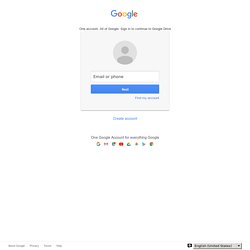
All of Google. Sign in to continue to Google Drive Find my account Forgot password?